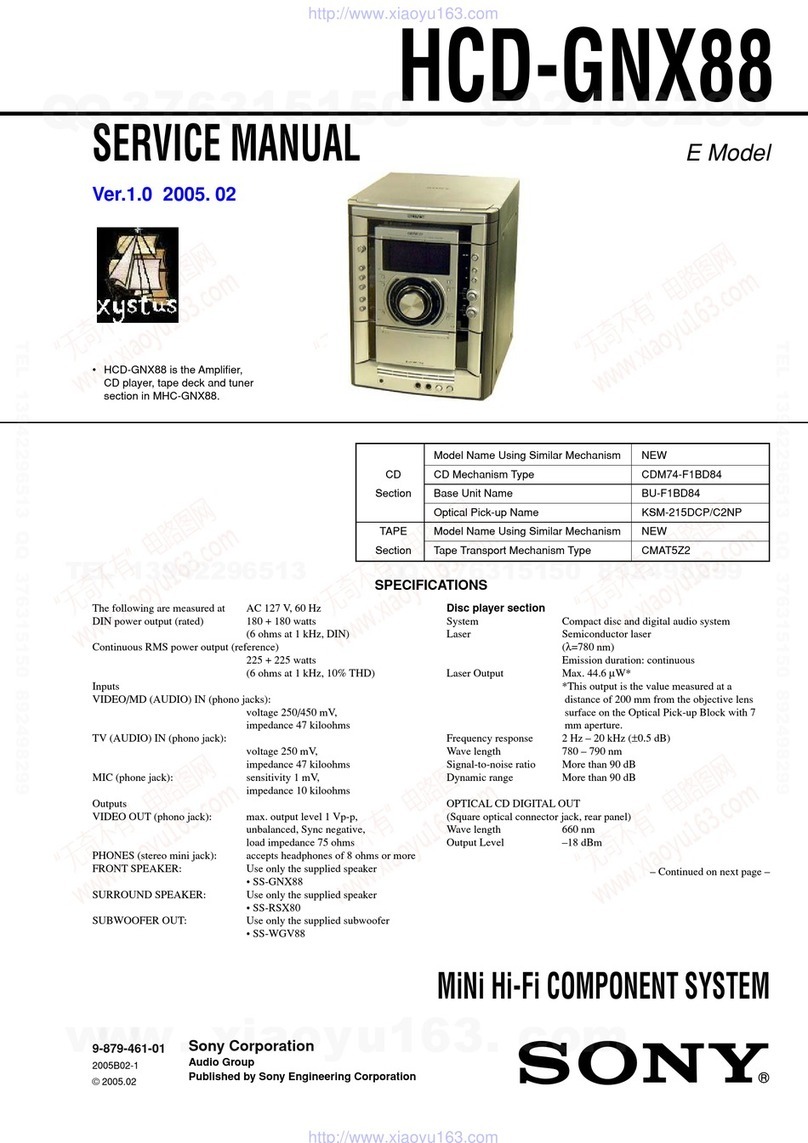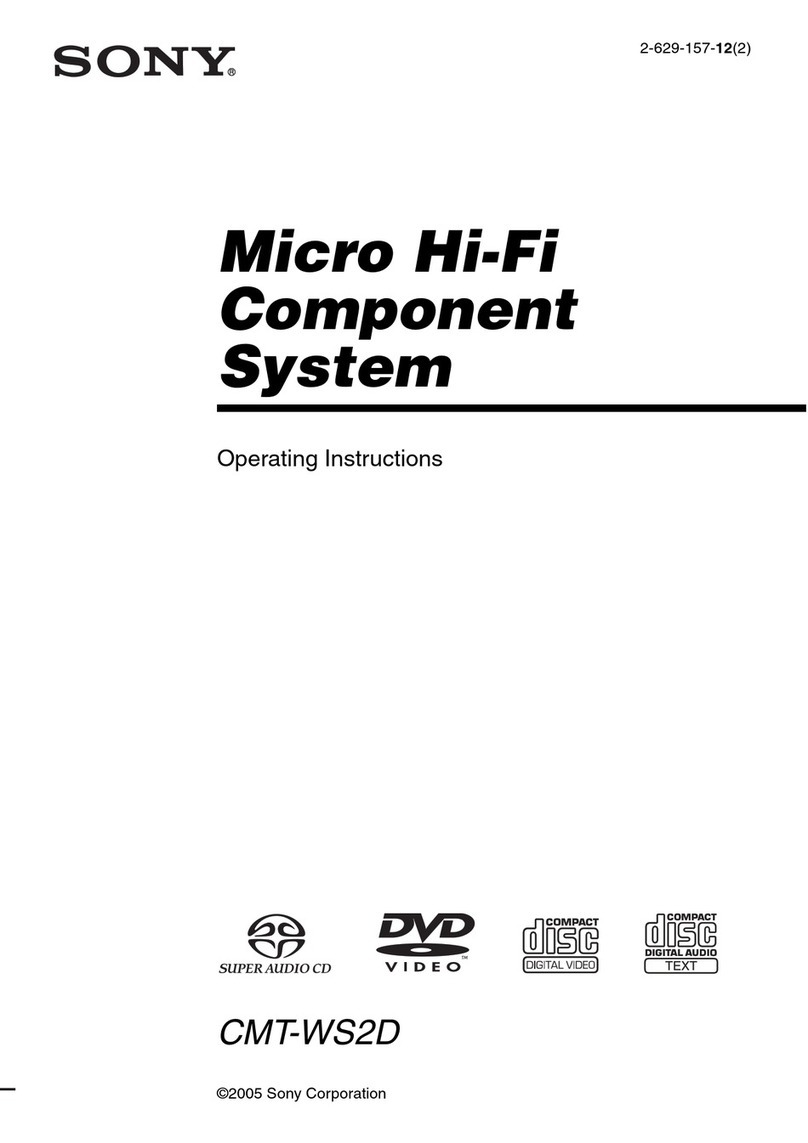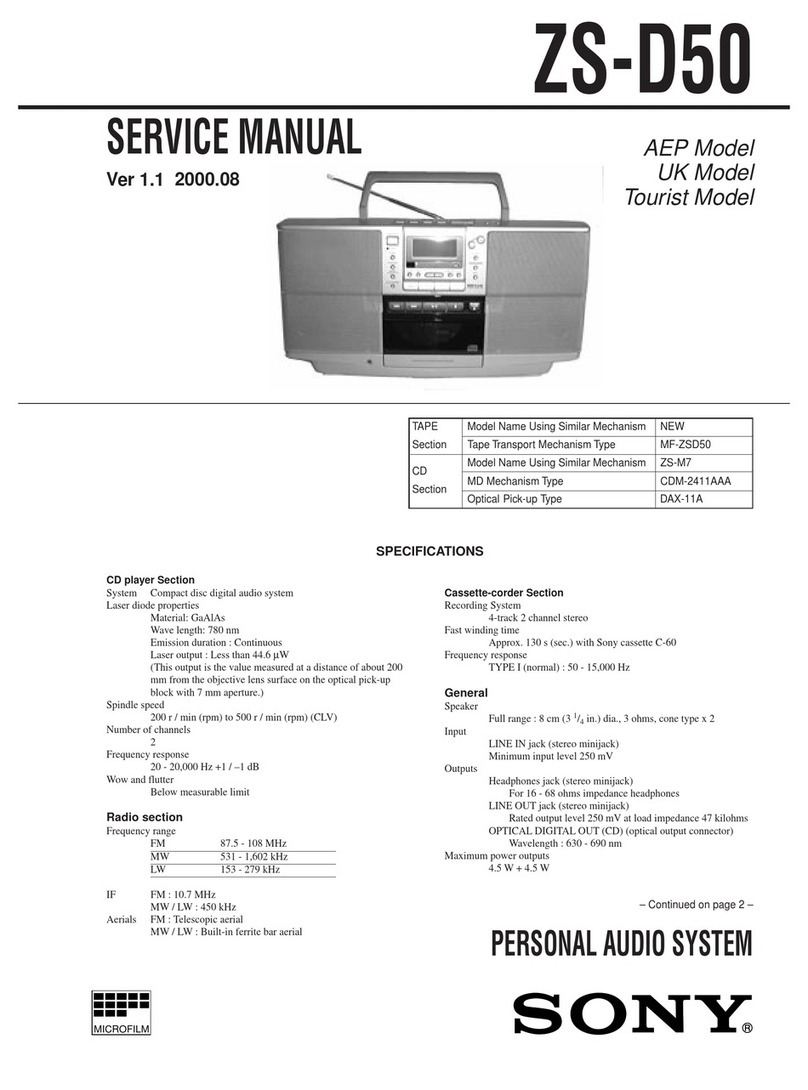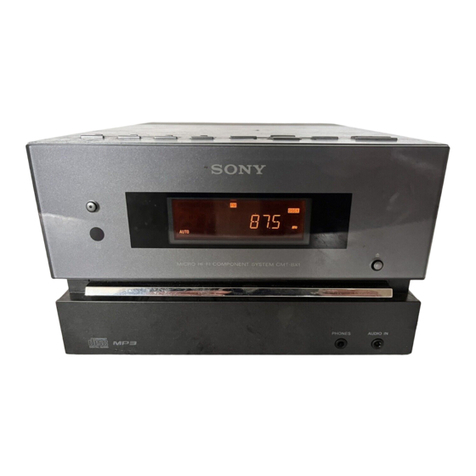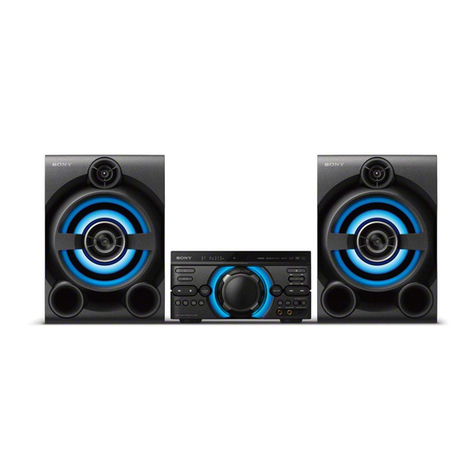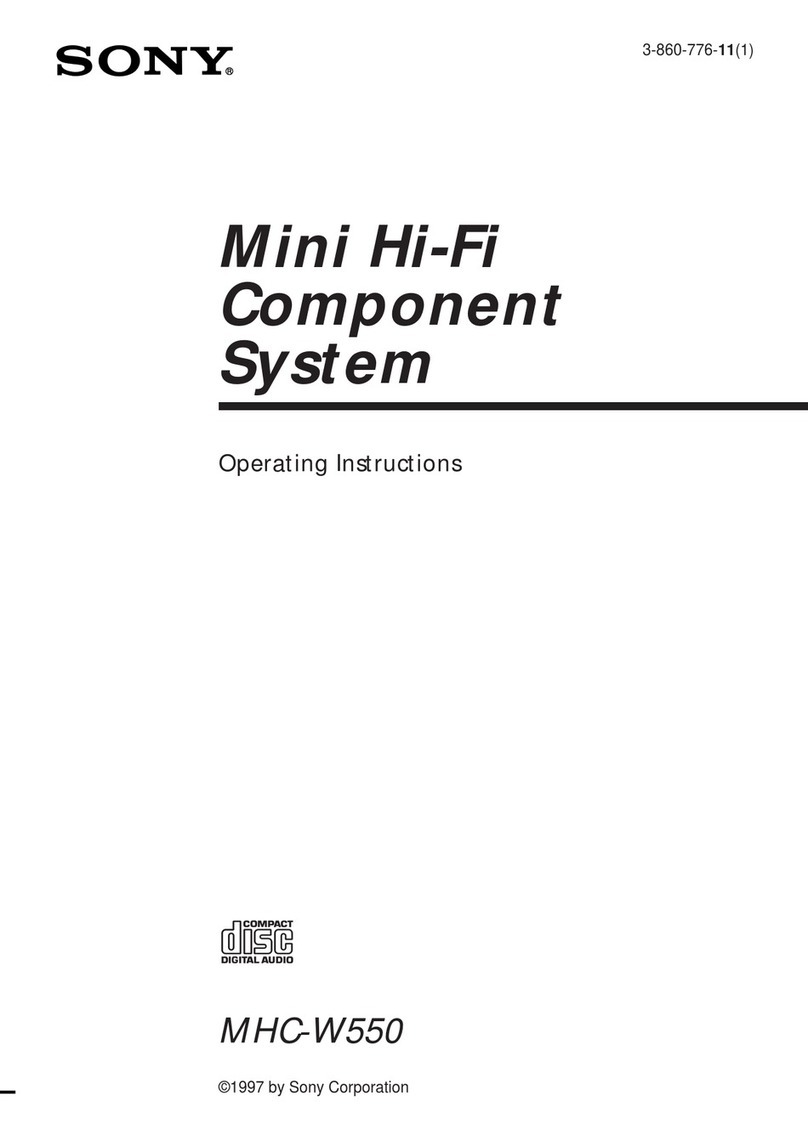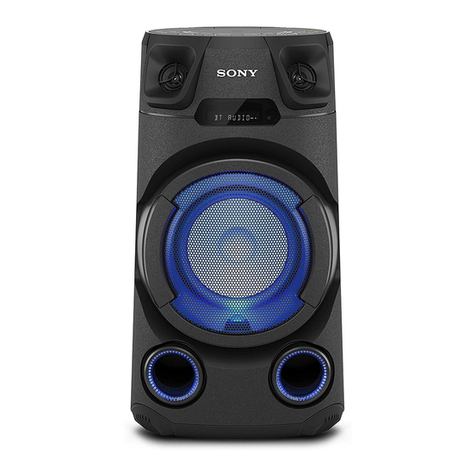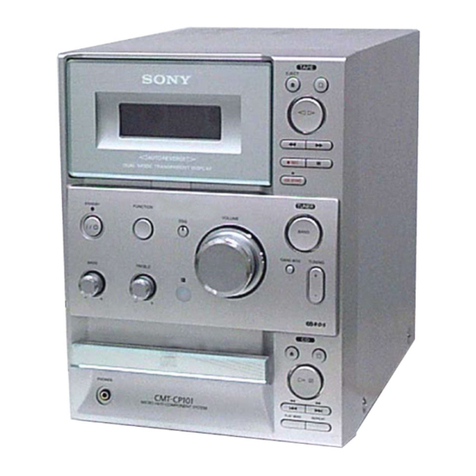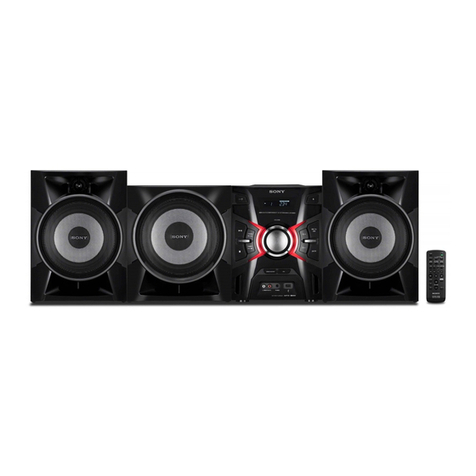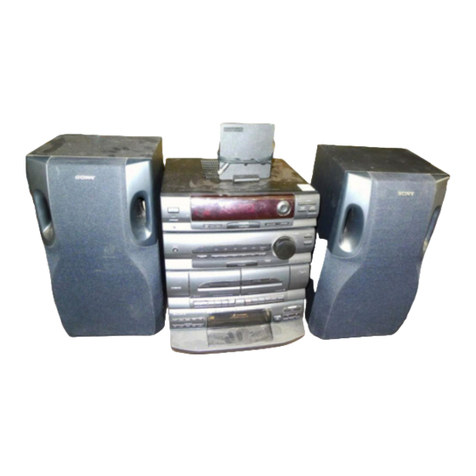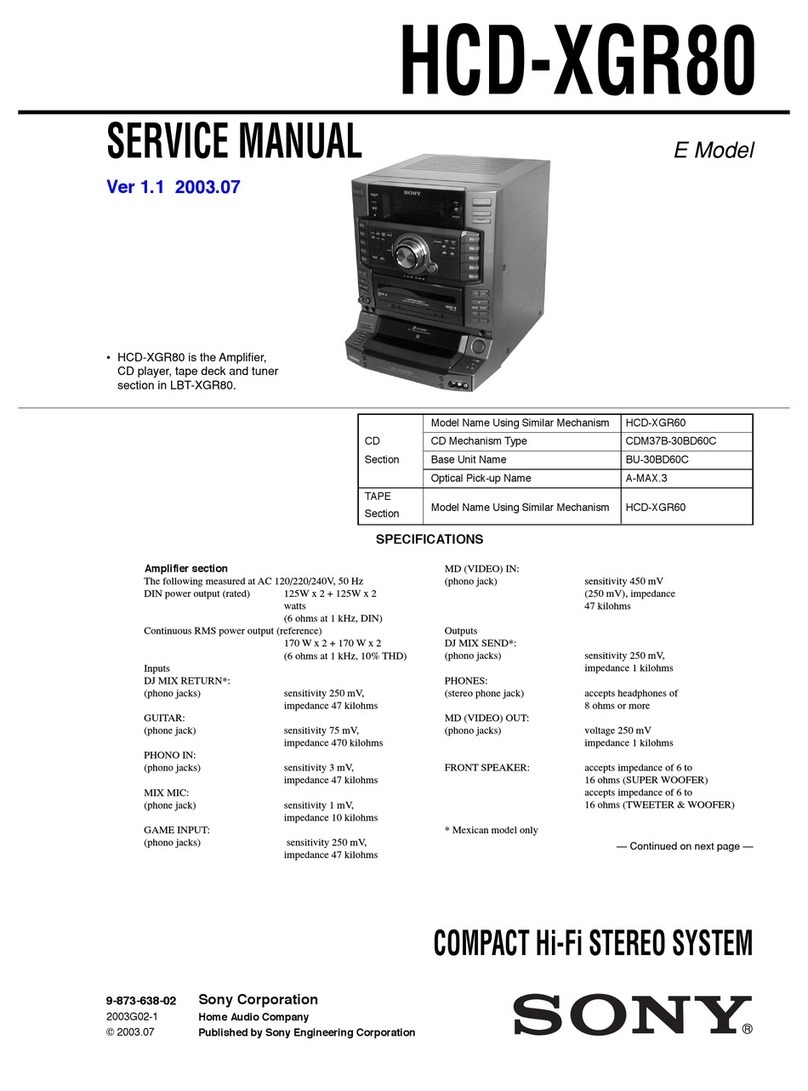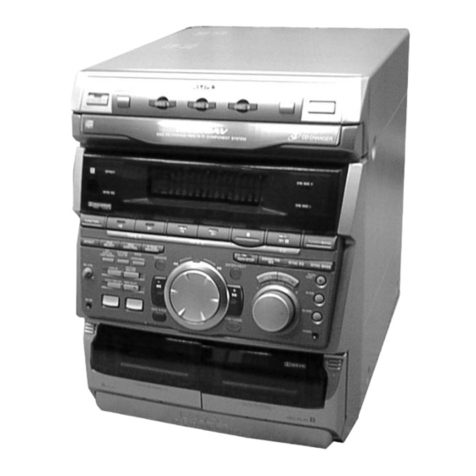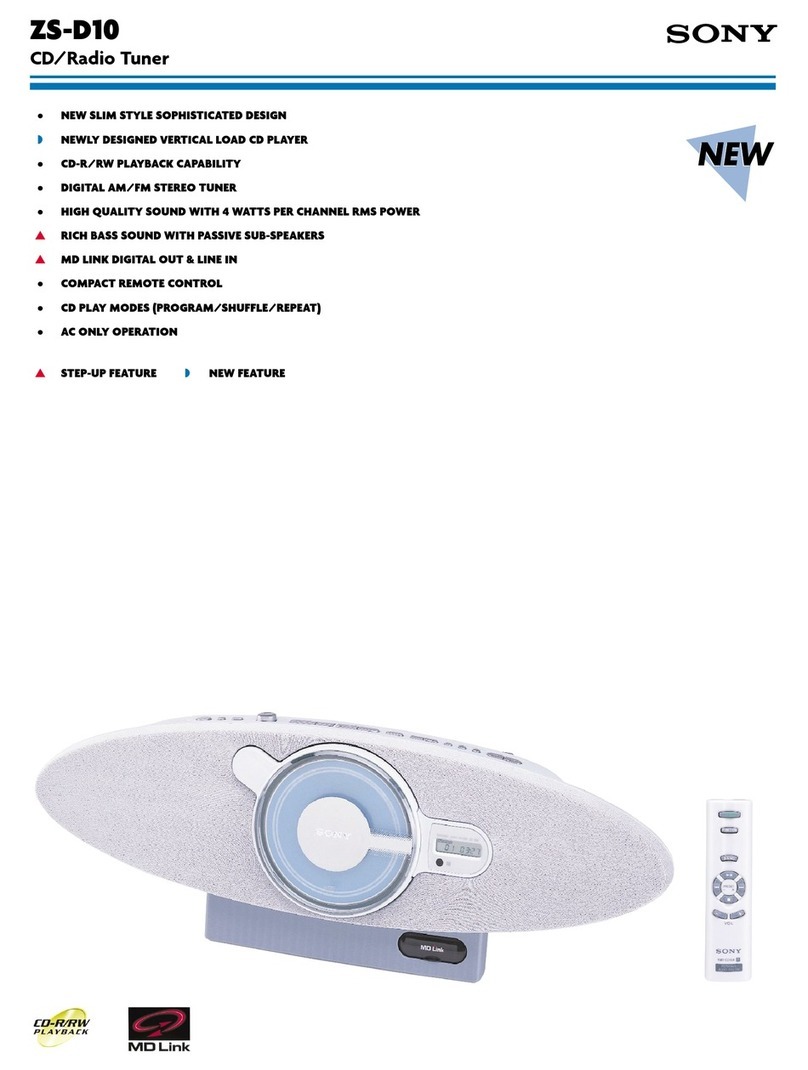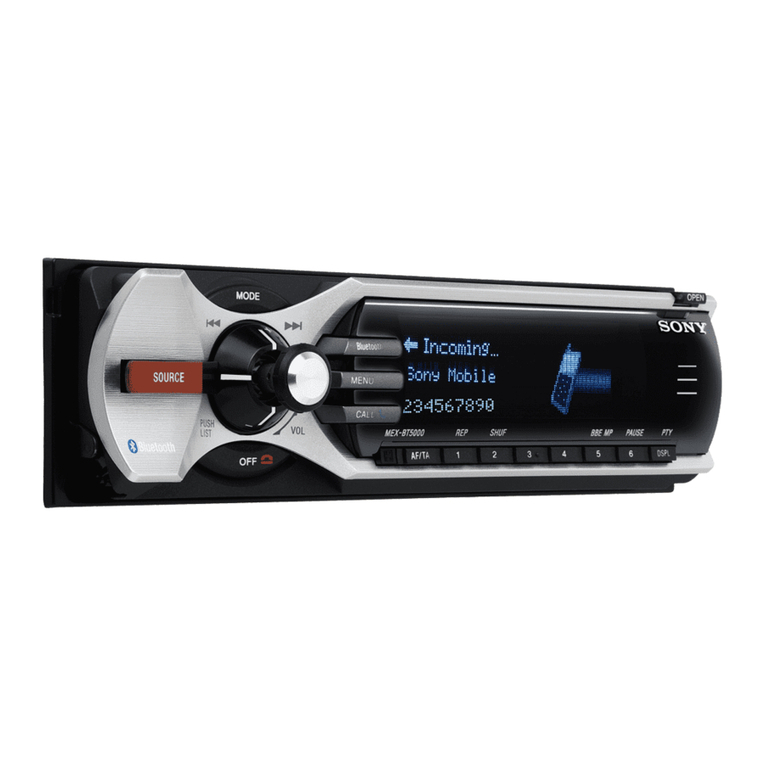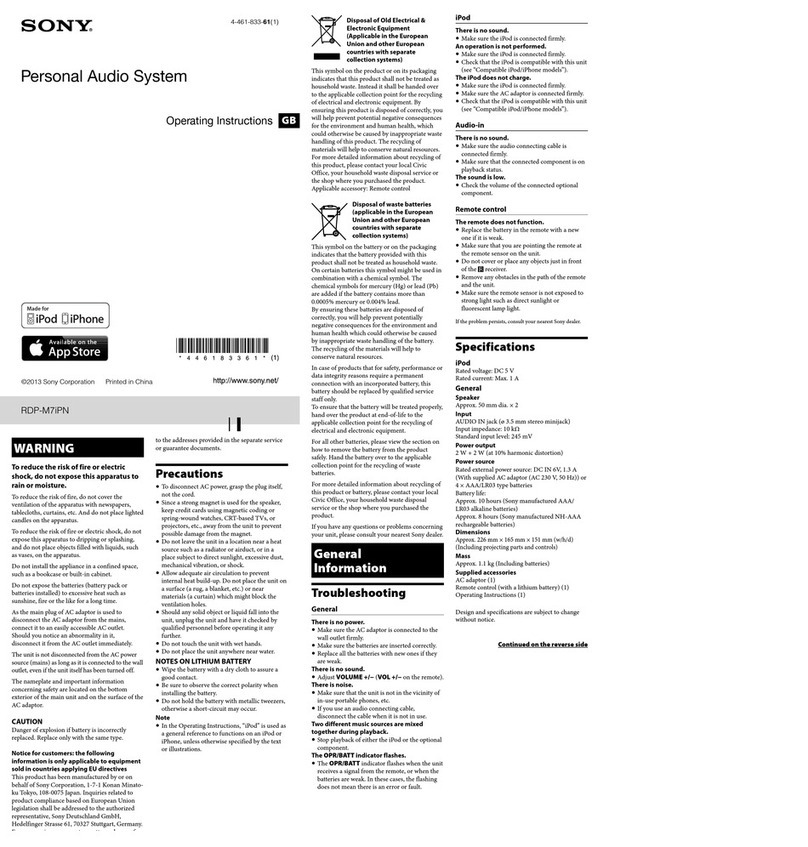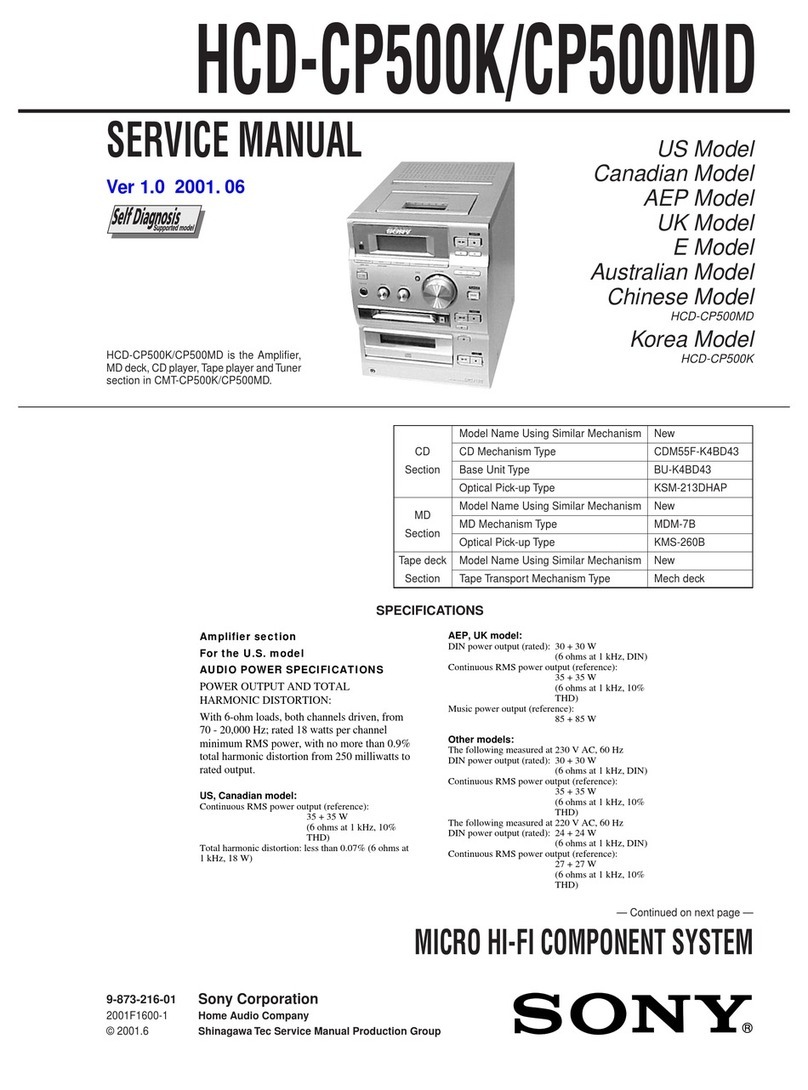2
Procedure for using the Self-Diagnosis Function (Error History Display Mode).
Note: Perform the self-diagnosis function in the “error history display mode”in the test mode. The following describes the least required
procedure. Be careful not to enter other modes by mistake. If other modes are entered accidentally, press the NAME EDIT/
CHARACTER button while REC IT is lit, and when REC IT goes off, press the MD Zbutton to exit the mode.
1. In the power ON state, set the function to MD, and while pressing the DISPLAY and xbuttons together, press V-GROOVE . While
the test mode is set. “[Check]”will be displayed.
2. Move the multi-stick left and right to display “[Service]”and press the PUSH ENTER button.
3. Move the multi-stick left and right to display “Err Display”.
4. Press the PUSH ENTER button to enter the error history mode. “op rec tm”will be displayed.
5. Select the item to be displayed or executed using the multi-stick.
6. Press the NAME EDIT/CHARACTER button so that REC IT lights up.
7. Press the MD REC MODE button to display the selected item.
8. Press the REC MODE button another time to return to step 4.
9. Pressing the CLEAR button when REC IT is lit displays “Err Display”and exits the error history display mode.
10. To exit the test mode, press the MD Zbutton while REC IT is off. This sets the standby state and ends the test mode.
Self-diagnosis Display
This system has the Self-diagnosis display
function to let you know if there is a system
malfunction. The display shows a code made up of
three or five letters and a message alternately to
show you the problem. To solve the problem, refer
to the following list. If any problem persists,
consult your nearest Sony dealer.
C11 / Protected
The MD is protected against erasure.
pRemove the MD and slide the tab to close the
slot (page 49).
C12 / Cannot Copy
You are attempting to record a CD with a
format that the system does not support, such as
CD-ROM.
p––
C13 / REC Error
Recording is not possible.
pMove the system to a stable place and start
recording over from the beginning.
The MD is dirty or is scratched or the MD does
not meet the standards.
pChange the MD with another one and start
recording over from the beginning.
C13 / Read Error
The MD cannot read the disc information
correctly.
pEject the MD once, then insert it again.
C14 / Toc Error
The MD cannot read the disc information
correctly.
pChange the MD with another one.
pErase all the recorded contents of the MD
using the Erase function.
C41 / Cannot Copy
This unit complies with the Serial Copy
Management System (SCMS) which limits the
number of digital copies that can be made of
any given digital audio source.
E0001 / MEMORY NG
The component has internal problems.
pConsult your nearest Sony dealer.
E0101 / LASER NG
There is a problem with the laser pickup.
pThe laser pickup may be damaged. Consult
your nearest Sony dealer.
Tuner section
FM stereo, FM/AM superheterodyne tuner
FM tuner section
Tuning range
Tourist model: 76.0 –108.0 MHz
Other models: 87.5 –108.0 MHz
Antenna FM lead antenna
Antenna terminals 75 ohm unbalanced
Intermediate frequency 10.7 MHz
AM tuner section
Tuning range 531 –1,602 kHz
(with the interval set at
9 kHz)
530 –1,710 kHz
(with the interval set at
10 kHz)
Antenna AM loop antenna
Antenna terminals External antenna terminal
Intermediate frequency 450 kHz
General
Power requirements 120 V, 220 V, 230 –240 V AC,
50/60 Hz
Adjustable with voltage selector
Power consumption 180 watts
Dimensions (w/h/d) Approx. 250 x 375 x 395 mm
Mass Approx. 12.0 kg
Supplied accessories: AM loop antenna (1)
FM lead antenna (1)
Remote Commander (1)
Batteries (2)
Video cable (1)
Speaker cords (2)
Front speaker pads (8)
Design and specifications are subject to change
without notice.

